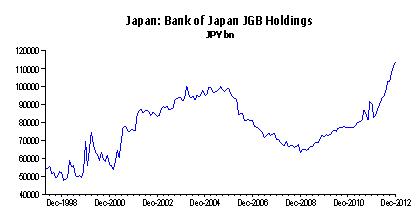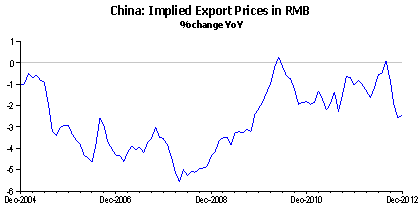Tyndall Monthly Commentary: Bondholders risk euthanasia
Low yields and the risk of capital losses are putting investors off bonds, but regulations are forcing many financial institutions to stay in this supposedly safe asset class.
Friday, February 1st 2013, 5:05PM
by Andrew Hunt
Eighty years ago, in the depths of the Great Depression, the economist Maynard Keynes suggested that in a world of freely floating currencies and bank financing of large government fiscal deficits, bond yields could be forced down to the zero bound or beyond, thereby impoverishing the bondholder or rentier class. He also suggested that once interest rates started to rise once again as the world ultimately returned to normal, the unfortunate bondholder would then suffer significant capital losses as well. Given the gearing effect of ultra-low bond yields on bond prices, even a modest back-up in bond yields from a very low level to simply “a less low level” can impose very significant capital losses on bondholders and particularly on those who must “mark to market”.
Today, three generations after Keynes’ pondered this potential “euthanasia of the rentier class”, we do have incredibly low bond yields and we suspect that in many if not all of the world’s larger economies, yields are now so low as to be a problem for the end user investors (be they individuals or pension funds) and, in particular, for their actuaries. Moreover, given the potential for bondholders to experience large capital losses if and when the global economy finally does return to a more even keel, one could suggest that the risk-reward calculation for holding long term investment-grade bonds is currently not an attractive one. In fact, only if one believes that actual deflation or at least ”below target rates of inflation” are possible, can one really contemplate holding long-term government bonds at this juncture, unless one is otherwise compelled to do so by the rising tide of financial regulation and repression.
Certainly, given this situation, we are not surprised to find that many investors are indeed quitting the bond markets at present. Many of the world’s banks, insurers and other financial entities are being obliged to stay in the markets as a result of regulatory regimes and collateral requirements (it is somewhat ironic that they are being pushed into what are notionally safe assets but which actually now have a questionable price outlook) but where investors are free to move, they are moving away from bonds and chasing risk assets, be they equities, junk bonds, property assets or currencies of countries that they might struggle to find on a map!
Last week, we met with the head of a medium-sized bond brokerage business who expressed delight (that is, in the rising commissions) but also horror at some of the “stuff” that his clients were moving into; trades out of AAA Bunds into junk denominated in exotic currencies are now commonplace. In fact, we suspect that it has been this process that has provided much of the impetus and momentum for risk markets over recent weeks and certainly for the improvement in Europe’s peripheral debt markets.
If private and professional investors are piling out of government bonds in Germany, the UK, US and, most of all, Japan and into risk assets “in case there is an economic recovery in 2013 or 2014”, then, in theory at least, long-term government bond prices should be plummeting. This has not so far happened, almost entirely we suspect because of the rising tide of financial regulation that we described earlier that has ensured that there are not only “captive buyers” of bonds within the financial system but also because the central banks have recently emerged as (massive) bond buyers of last resort.
In the US, the banking system – including the Federal Reserve – is currently buying enough Treasury bonds to fund the equivalent of at least half of the budget deficit. In Spain and France the banks are funding the majority of the budget deficit, while in Italy the banking system is funding the entire budget deficit and some more. It is in Japan, though, that we find that the Bank of Japan has been obliged to become virtually the sole buyer of JGBs in the face of both massive issuance by the government and significant sales of existing bonds by existing investors. For us, the debate over whether the BoJ will introduce a new Quantitative Easing Policy is entirely redundant at this stage; the BoJ is already being forced to expand its balance sheet at a hectic rate, simply to prevent a recovery-choking rise in yields and a fall in bond prices that might well deal a mortal blow to the nation’s banking system, which currently has massive existing holdings of JGBs.

By purchasing all of these bonds and thereby keeping yields low in Japan, the central bank is implicitly providing “market liquidity” to a market in which others seem intent on selling. In effect, the central bank, by offering to be the buyer of last resort of JGBs, is allowing investors to quit the bond market at favourable prices and pursue risk assets without triggering the kind of back-up in yields that would have in the past brought the selling of bonds/buying of risk assets to an end as bonds started to look “cheap” again.
It is not just the Japanese central bank that is doing this, though; all those central banks that are either buying bonds directly (such as the US Federal Reserve Bank) or providing funds to commercial banks so that the latter can buy the bonds (the ECB) are together implicitly underwriting the current boom in risk assets. As a result, we have no qualms in suggesting that the latest “risk on” phase in markets is being underwritten and implicitly financed by the central banks and, as history has shown time and time again, these sorts of rallies can occur almost regardless of what is occurring within the global real economy, at least in the short term.
We would argue, though, that it may be unwise to ignore completely what is going on in the real economies at present. In the West, the Euro Economic Crisis (EEC) drags on and shows no signs of abating and, in the US, growth trends are lacklustre at best. In this situation, we are not surprised to see that world trade trends are particularly weak, a situation that we think is of some importance given recent events in the currency markets.
Specifically, as Japanese banks and other investors have quit the JGB market in favour of risk assets both at home and abroad, they have helped to drive down the value of the Yen. For the rest of Asia, this implied devaluation by one of their trading partners/competitors could perhaps not come at a worse time. The Asian region has recently experienced a sharp rise in its production costs as a result of rising land and labour prices and this has already been causing them problems in the still-weak world trade environment that we noted above. Across Asia we find high levels of inventory and weak levels of profitability and cashflow amongst exporters, with one of the worst-afflicted economies being that of China.
China’s recent easing of domestic policy may have aided some local governments and property developers but, by supporting the currency (by encouraging capital inflows) and triggering faster rates of domestic inflation, the easing has probably hurt China’s exporters on a net basis. In fact, we find that trading conditions are so poor currently that Chinese exporters are being obliged to deflate their export prices quite rapidly in RMB terms so that they can control their inventory levels.

If the weak world trade situation continues – and we see no reason why it will improve, given our comments above and the latest freight data – then we suspect that the plight of China’s exporters will intensify and that, by midyear, there will be calls from within China for a lower exchange rate. In fact, by then we suspect that China may be running a balance of payments deficit and the exchange rate could then begin to fall naturally even without official assistance.
If China were to join Japan with a weaker exchange rate, then this will place more pressure on Korea, Taiwan, Malaysia, Singapore and the rest of Asia, with the result that they too may begin to pursue weaker currencies. In fact, the Philippines has already begun to intervene in the FOREX markets with such an aim in mind and Korea seems to be threatening to do the same.
Consequently, by the second half of 2013, we may see Asia embarking on competitive devaluations. For Western consumers, the notion that Asian export prices may be falling by the end of the year (as the Asian currencies fall) may initially appear to be good news but, over time, we suspect that the West may come to realise that Asia is simply attempting to gain market share in the stagnant world trade environment and that this represents not just a threat to Western jobs and recovery, but also a deflationary threat to the wider world.
In most developing countries, traded goods prices account for around a third of the CPI on average (although they account for nearly a half in New Zealand) and if Asian export prices and therefore world trade prices start to deflate, then Western central banks may find that headline inflation is once again undershooting their targets and that deflation is becoming a threat to the world economy once again.
In our opening comments, we remarked that the only way that one could justify owning bonds at this stage was if one feared deflation and it seems to us that before the end of the year there may at least be a return of the threat of deflation, if not actual deflation per se. Therefore, we wonder if bondholders may yet find that they can enjoy a stay of execution – that their euthanasia is still a way off - while investors in risk markets may find that their ride in markets is not quite as smooth as they hoped, as the threat of deflation undermines corporate profitability hopes for a near-term economic recovery. It seems to us that 2013 will be a year of currency and, at times, wider-market volatility and that the current central-bank-driven “risk on” rally may prove as erratic as its recent predecessors.
Andrew Hunt
International Economist, London
Andrew Hunt International Economist London
| « Pathfinder Commentary: Portfolio protection | Hamish Douglass Unplugged - Latest Video from Adviser Briefing - August 2012 » |
Special Offers
Comments from our readers
No comments yet
Sign In to add your comment
| Printable version | Email to a friend |









